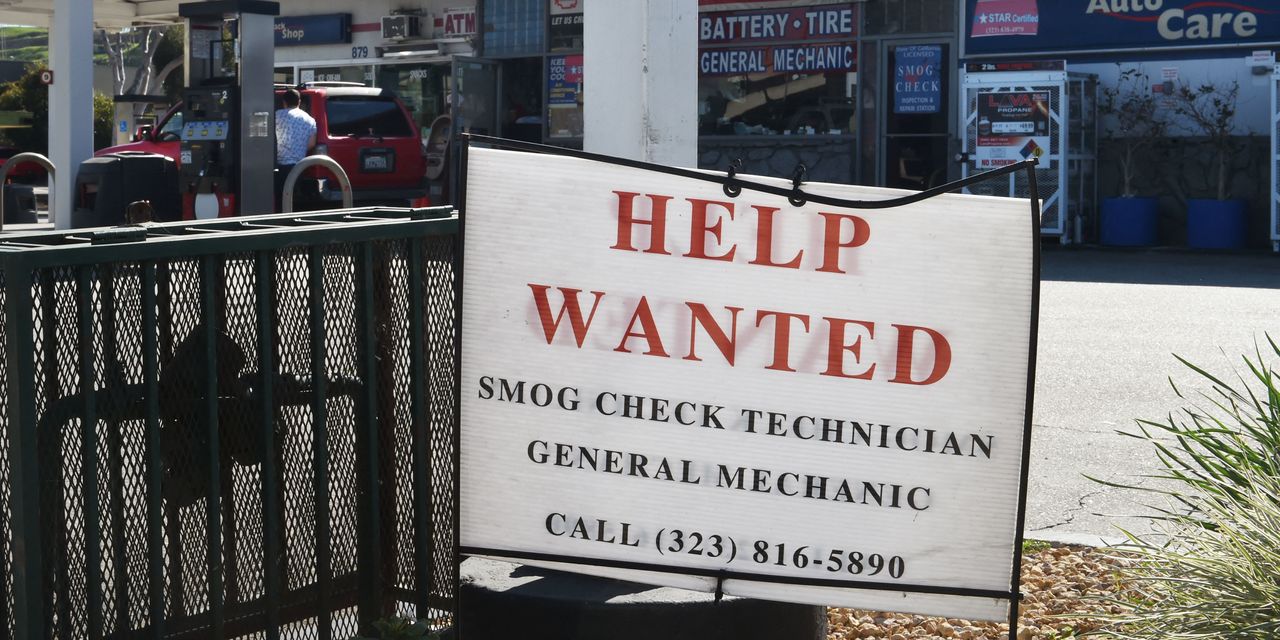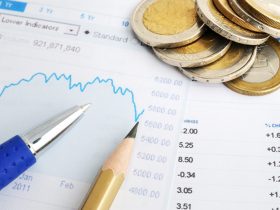The numbers: The U.S. created 187,000 new jobs in August, but new hires totaled less than 200,00 for the third month in a row and added to mounting evidence of a cooling labor market.
The unemployment rate, meanwhile, jumped to 3.8% from 3.5%, the government said Friday, marking the highest level in a year and a half.
Fresh evidence of a cooling labor market and a recent slowdown in inflation and could keep the Federal Reserve from raising interest rates again anytime soon.
After the report, stocks and bond yields rose. Economists polled by the Wall Street Journal forecast 170,000 jobs and a 3.5% unemployment rate.
Senior officials Fed officials say the increase in hiring needs to slow to 75,000 to 100,000 new jobs a month to ease the worst labor shortage since World War Two and help reduce inflation.
Central-bank officials meet in three weeks to plot their next step, but the August jobs report could persuade them to stand pat.
The Fed has jacked up a key short-term interest rate to a top end of 5.5% from near zero a year and a half ago, putting more stress on the economy. If rates went even higher, economists say, it could trigger a recession.
Don’t miss: ‘Music to the Fed’s ears’ — analysts react to jobs report
Key details: The August jobs report is notoriously tricky to decipher, since fewer businesses respond immediately to the government’s employment questionnaire with so many people on vacation.
There were a few other complicating factors last month. The strike in Hollywood and the bankruptcy of trucker Yellow Inc. both depressed the headline jobs number. People are not counted as employed if they are not working, even if they are on strike.
Whatever the case, the labor market does appear to be losing some of its mojo. The number of industries hiring has shrunk this year, for one thing. And job openings have also fallen to a 28-month low.
Not only that, but hiring was much weaker in the prior two months, updated figures show.
The government lowered its estimate of job gains in July to 157,000 from 187,000. The increase in employment in June was also knocked down to a more than 2½-year low of 105,000 from 185,000.
Turning to August, hiring was largely concentrated in health care, hotels and restaurants and construction.
Employment fell sharply in transportation (34,000) owing to the Yellow failure. The information sector also showed a 15,000 decline because of the Hollywood strike.
Hourly wages rose a modest 0.2% in August. The increase in pay over the past year fell a tick to 4.3%. Fed officials want to see wage growth slow to pre-pandemic levels of 3% or less.
The share of people working or looking for work, meanwhile, climbed to 62.8% and hit the highest level since early 2020.
Nearly three-quarters of a million people entered the labor force in August, partly explaining why the unemployment rate rose sharply. These people are considered unemployed until they actually find a job.
In any case, rising labor-force participation can also help to reduce inflation. When more people look for work, companies don’t have to raise wages as much to obtain labor.
Big picture: The labor market has cooled off, but an acute worker shortage is still keeping wage growth elevated and adding to upward pressure on inflation.
Fed officials — and many Wall Street economists — are convinced higher interest rates will temper economic growth later in the year and perhaps even cause unemployment to rise. A softer economy would help the Fed reduce the rate of inflation to its 2% target from current levels of 3% to 4%.
The big question is whether the economy can avoid outright recession. The Fed could be done raising interest rates, potentially extending the U.S. expansion.
Looking ahead: “The Fed couldn’t hope for a better report in their fight against inflation,” said Chris Zaccarelli, chief investment officer at Independent Advisor Alliance.
“The Fed got its dream jobs report with cooler labor demand, more labor supply, and slower wage growth, said chief economist Bill Adams of Comerica.
Market reaction: The Dow Jones Industrial Average DJIA and S&P 500 SPX rose in Friday trades. The yield on the 10-year Treasury BX:TMUBMUSD10Y rose several ticks to 4.14%.
Read the full article here












Leave a Reply